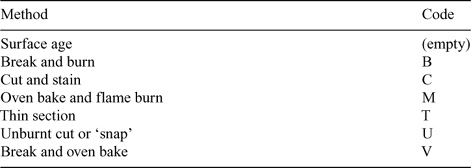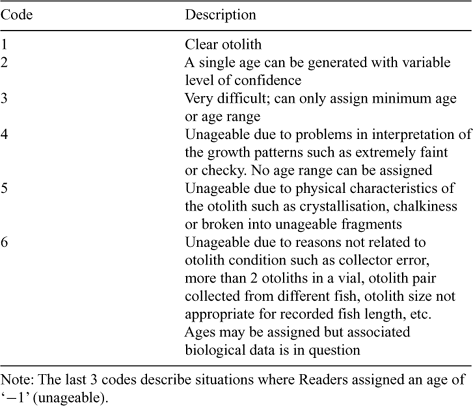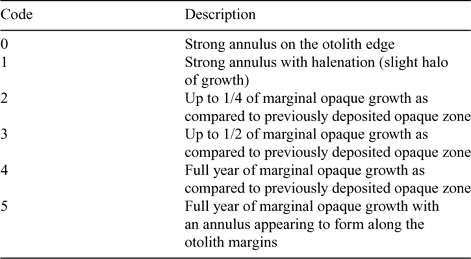Quality control of age data at the Alaska Fisheries Science Center
Daniel K. Kimura A B and Delsa M. Anderl AA Alaska Fisheries Science Center, National Marine Fisheries Service, NOAA, 7600 Sand Point Way N.E., Seattle, WA 98115-6349, USA.
B Corresponding author. Email: dan.kimura@noaa.gov
Marine and Freshwater Research 56(5) 783-789 https://doi.org/10.1071/MF04141
Submitted: 12 July 2004 Accepted: 2 March 2005 Published: 22 July 2005
Abstract
The Alaska Fisheries Science Center operates a 14-person Age and Growth Program that specialises in the ageing of various groundfish species using otoliths. In 1983, a quality control programme was established whereby a random subsample of 20% of the total of aged samples is re-aged by a second age reader. The purpose of this programme is to assure, to the greatest extent possible, that ages used in stock assessment are based on consistent ageing criteria. This age data is entered into our AGEDATA Microsoft ACCESS™ database where it can be easily updated, corrected and analysed. VISUAL BASIC computer programmes AGREE (a precision estimating programme) and RANGES (an outlier searching programme) were written to routinely analyse age data before data are released to end-users. The statistical relationship between average percentage error and coefficient of variation is described, as well as an interpretation of Bowker’s test for symmetry. Discrepancies between the reader and tester are reconciled while viewing the problematic otoliths using a dual-headed microscope, and reconciled ages are assigned. When necessary, all questionable otoliths in a troublesome sample may be re-aged.
Extra keywords: Bowker’s test, fish ageing, precision measures, quality control.
Acknowledgments
We thank Betty Goetz, Craig Kastelle, and two anonymous reviewers for their helpful comments.
Beamish, R. J. , and Fournier, D. A. (1981). A method for comparing the precision of a set of age determinations. Canadian Journal of Fisheries and Aquatic Sciences 38, 982–983.
Campana, S. E. (2001). Accuracy, precision, and quality control in age determination, including review of the use and abuse of age validation methods. Journal of Fish Biology 59, 197–242.
| Crossref | GoogleScholarGoogle Scholar |
Kimura, D. K. , and Lyons, J. J. (1991). Between-reader bias and variability in the age determination process. U.S. Fishery Bulletin 89, 53–60.

Roberson, N. R. , Kimura, D. K. , Gunderson, D. R. , and Shimada, A. M. (2005). Indirect validation of the age reading method for Pacific cod, Gadus macrocephalus, using otoliths from marked and recaptured fish. U.S. Fishery Bulletin 103, 153–160.

Appendix 1. Age and otolith descriptions (i.e. codes) entered by age readers into the AGEDATA database

|

|

|


